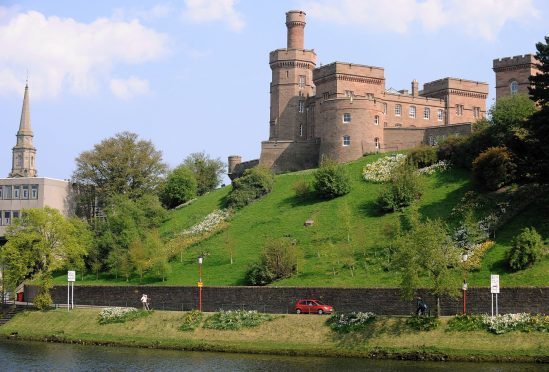A maze of rabbit warrens will be surveyed in September to find out if they are destabilising the bank below Inverness Castle.
Highland Council will also examine the effects of water uptake from planted trees, and a retaining wall at the bottom of the slope, on the bank’s stability.
Inverness West councillor Alex Graham said that it is “widely known” the castle is not supported by rock and that it was a “wise precaution” by the local authority to carry out the checks.
A remote control grass cutting machine was also tested yesterday on the castle’s embankment.
It is hoped the machine, known as a “spider,” will make it easier to keep the steep slopes tidy.
The new grass cutting equipment will be fully trialled at the castle from August 27 and it could potentially be used for other steep and inaccessible areas once the trial results have been evaluated.
Provost of Inverness Helen Carmichael said: “I am keen to see how the remote control machine works. It should make grass cutting much easier in accessible areas such as the castle banks and will vastly improve the look of the area.”
For 2018, the council is also considering introducing a type of grass that is more easily managed in the longer term.
The new machine has arrived as councillors made calls earlier this week for an urgent clean-up of the overgrown Ness riverbank.
Grass, reeds and weeds have grown up to 2ft high in places and Inverness Central ward councillor Janet Campbell described the current view of the city centre area as “ghastly and ugly.”
More stringent health and safety practices means the specialist machinery must now be used to cut grass on steep slopes, whereas contractors previously cut it with conventional mowers.
The council spokeswoman said that consultation will take place on the most effective way of maintaining the riverbank.
She added that grass cutting might be more beneficial in spots where visitors want to sit by the riverbank, but that leaving it to grow in other places would encourage new species of flora and fauna such as wild flowers, butterflies, kingfishers and voles.
She said that allowing growth could also help prevent erosion of the banks by absorbing surface water runoff from nearby roads and pavements.
